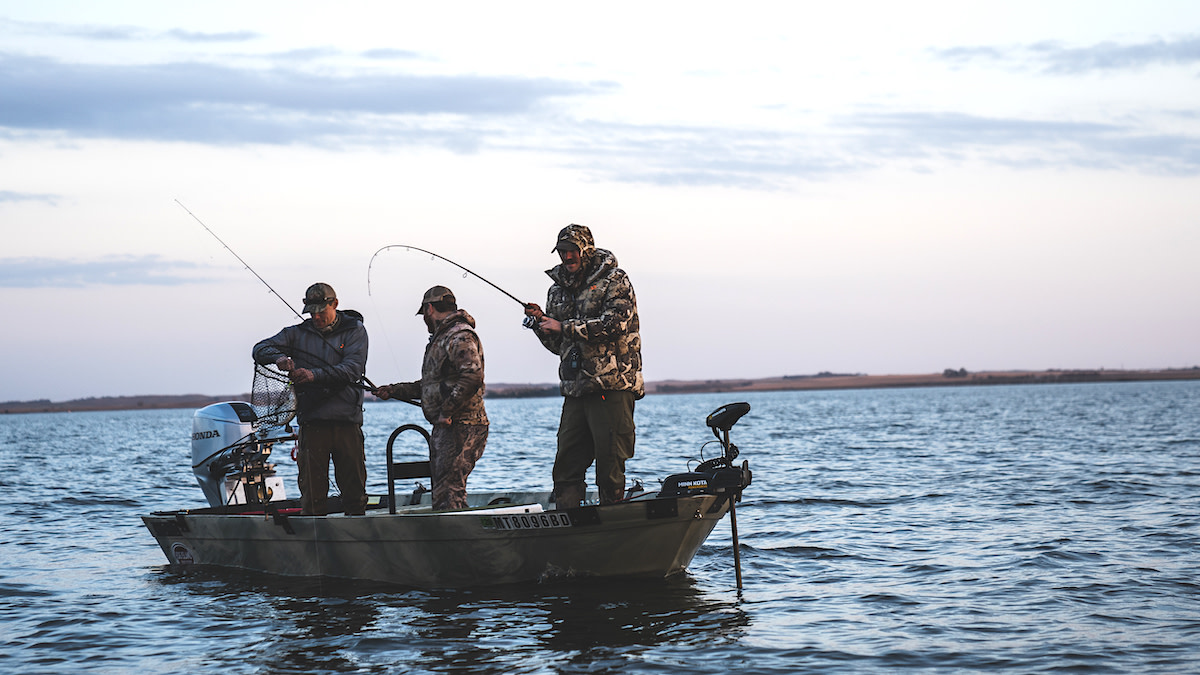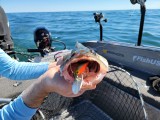
I’d be lying if I said I didn’t like live bait. In today’s day and age, however, you would have to crazy to not have a good sampling of soft plastic lures in your walleye boxes. Plastics open a diverse set of options when compared to live bait. We will forgo the obvious holdups that live bait can be expensive, difficult to keep alive, let alone challenging to keep on a hook, and instead focus on why plastics deserve a place in your arsenal of walleye gear.
Plastics let you fish faster and more aggressively than live bait. Pretty much anyone who has ever cast a jig for walleyes has seen their jig going one way and their nice, expensive shiner headed in another direction. The same could be said for fishing live bait through weeds or really any type of cover. It is frustrating and expensive. Plastics are much more durable and let you fish without worrying if you are wasting your time fishing without bait.
Another overlooked advantage of plastics is that plastics can help slow the decent of your jig. Often, it is this slower fall that is the key to catching. Inversely, plastics put out more vibration when fishing in low light or in off-colored water. Let’s be honest: all the cool-looking colors now available don’t hurt your presentation.
If one thing has changed with these “new-age” plastics it is that they are much softer, which produces more action at all retrieve speeds. While many of the bass models used by walleye anglers catch a lot of fish, they can be an awful pricey cost per fish. Because of this, some companies have created incredible soft plastics that actually stretch out to almost double their normal length. This helps ensure a panfish or walleye doesn’t tear your lure apart in minutes. Aside from the expense, this is important because it drastically cuts down on the number of plastics you need to carry.
Here are five of the most popular and versatile styles of walleye plastics and when you should consider tying them on.
Boot-Tail Nowadays we call them swimbaits, but if you are old enough you might call them boot-tails or shad bodies. This minnow profile lure has a boot-shaped tail that puts out great action even at slows speeds. Most importantly, this tail puts out vibration that draws fish closer in clean water and help them just find it at all in off-colored water. High-dollar models utilize softer plastics that give it more action and, as a result in many cases, more bites. The softer plastic comes at a price not only when you buy it, but with how many more you go through in a day due to its reduced durability.
Fork-Tail The fork-tail or fluke is another minnow style design that much like the boot-tail was borrowed from the panfish and bass markets. Unlike the boot-tail, which excels in off colored water, the fork tail is more of a finesse bait and works best in clear water or under negative feeding patterns. Many of the lures in this style feature a thinner-profile body like a finesse worm or thin minnow. Do not be afraid to fish these styles on a dropshot just like you would for bass or as a trailer on a lure you are working slowly, such as a hair jig.
Twister-Tail It is safe to say that this is the OG of walleye plastics, a simple design that goes back so far no one is really sure where it truly came from. Thread one on a simple lead head jig and you have action for days. I think the brilliant thing about a twister tail is that it does not really excel in any one area but does well in most scenarios. If there is a problem with it, it is that most anglers do not throw it as much due to its old-school simple vibe. You cannot catch walleye on something that you don’t put in the water.
Ring Worm I can remember catching a lot of smallmouth bass on ringworms as a kid and transitioning them over for walleyes with great success. Much like the twister tail in the new age of plastics, they have gotten left behind a little, but not because of a lack of results. Ringworms excel when either pitched or vertically jigged in rivers, especially in cold water. Many anglers believe all the ridges create a bubble trail which helps get strikes, while others believe it is because it wiggles well in current and still has action with little movement. Regardless of which philosophy you subscribe, ringworms catch walleyes.
Jig Worm As a kid I only knew it as the Wyandotte Worm, but today it is what we call a jig worm. While it could have been started elsewhere, it got its name from anglers in Michigan that vertical jigged it in the cool spring waters of the Detroit River. Years later, Berkley produced a similar lure due to its effectiveness. While it is easily the dark horse of this list, the ironic part is that this worm style catches fish in a lot of places aside from just the Detroit River. Tournament anglers that headed to the river to compete in big-money walleye tournaments would buy bulk bags of them due to the number of jigs that get snagged up and lost. Once the tournament was over, many of these anglers took them back to their home waters only to find they worked as good or better than their favorite lures.
If you need any more encouragement to give plastics a shot for walleye, remember how expensive live bait is and how you always seem to run out of it. Good plastics last longer, put out comparable action, and catch walleyes nearly as well.
Feature image via Seth Morris.





